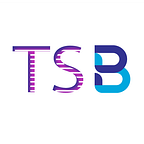Proof of Activity in Blockchain: A Hybrid consensus mechanism (Part 12- Blockchain Series)
Welcome to the 12th part of the 100 part series on Blockchain.
Previous parts: Part 1, Part 2, Part 3, Part 4, Part 5, Part 6, Part 7, Part 8, Part 9, Part 10, and Part 11
Proof of Activity is a hybrid consensus mechanism that is a combination of two other Blockchain consensus mechanisms: Proof of Work (POW) and Proof of Stake (POS). It attempts to leverage the best of both PoW and PoS consensus mechanisms to validate and generate new blocks in the Blockchain.
How does Proof of Activity work?
(i) The mechanism in Proof of Authority goes through two phases before a new block is ready to be added to the blockchain.
First phase: The first phase uses the approach from Proof of Work. The miners on the network, with higher computing power, compete to be the first to solve a complex mathematical puzzle to find a valid hash for the block. After finding the valid hash, a new block is generated. The new block will have a header and the reward address of the winning miner. The block header contains information like Merkel root, Timestamp, Block Version number, Difficulty Target, Nonce, and Previous Hash.
Second phase: Once the block is generated, the system is directed into the second phase, i.e., Proof of Stake. In this phase, a group of validators is randomly selected from the network. The chances of getting selected increase with the number of coins a participant owns in that network — just like in traditional Proof of Stake. The validators will be in charge of validating the generated block and signing it to confirm its validity.
Once the selected validators have signed or confirmed the block, the block is completed. The complete block is then added to the Blockchain.
(ii) The winning miner and the validators who played a role in contributing to the new block will be rewarded.
Advantages of Proof of Activity
(i) PoA mechanism makes the Blockchain more secure than either POW or POS separately. The probability of a 51% attack drops nearly to 0%. A successful attack means gaining control of over 50% of a Blockchain network. This can happen if an individual or a group has control of at least 51% of the entire network’s mining computing power like in PoW, plus at least 51% of the coins that are staked in the network are required to be owned like in PoS. As a result, the loss is significantly more than anyone could gain from the attack.
Disadvantages of Proof of Activity
(i) Proof of Activity carries with it problems that POW receives criticism for. Similar to POW, Proof of Activity uses high computational power for solving the mathematical puzzle. This means that this consensus mechanism also results in relatively high power consumption and the need for powerful hardware.
(ii) Proof of Activity doesn’t have any solution to stop the double signing by the validators.
Blockchain platforms using Proof of Activity: Decred (DCR) and Espers (ESP)
If you liked this article and want to know more about Blockchain, NFTs, Metaverse, and their applications, click the below link.
Happy learning!
